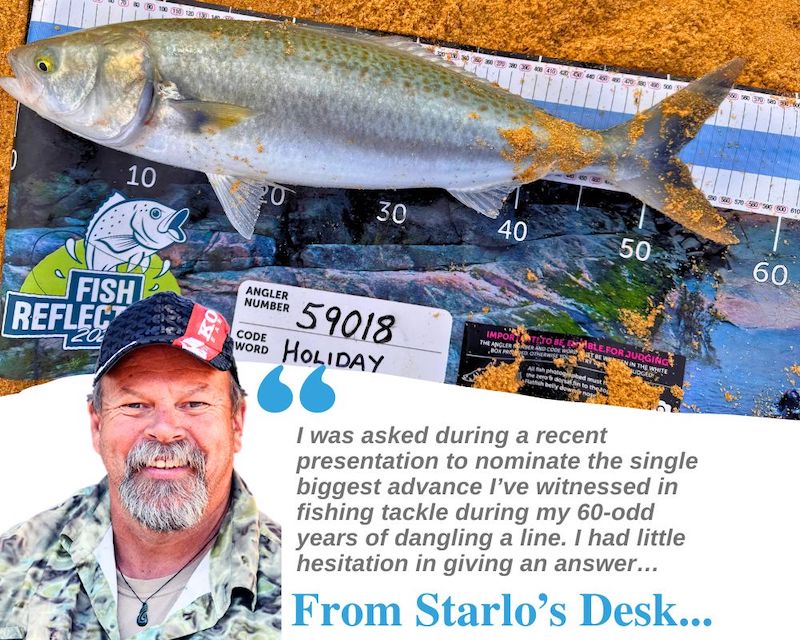
My October livestream on the “Starlo Gets Reel” YouTube channel (7PM Tuesday, 7 October) tackles a fascinating topic. In it, I ask this question: If you could travel back in time, what would you tell your teenage self in the hope of becoming a better, more successful and happier fisho today?
I bet that one’s got you thinking! I floated this topic in advance via my social media platforms and received some very interesting responses. It seems nearly everyone has at least a few ideas on the subject, but they cover an extraordinarily wide range of possibilities, from simply “go fishing more often” to a bunch of very specific thoughts on doing things differently. It certainly promises to be a lively and enlightening chat. I hope that if you’re reading this in time, you might consider joining us, but don’t stress if you can’t, as it’ll be available later on my channel to watch, as well. (By the way, if you do decide to join the discussion live, be sure to factor in the shift to Daylight Saving!)
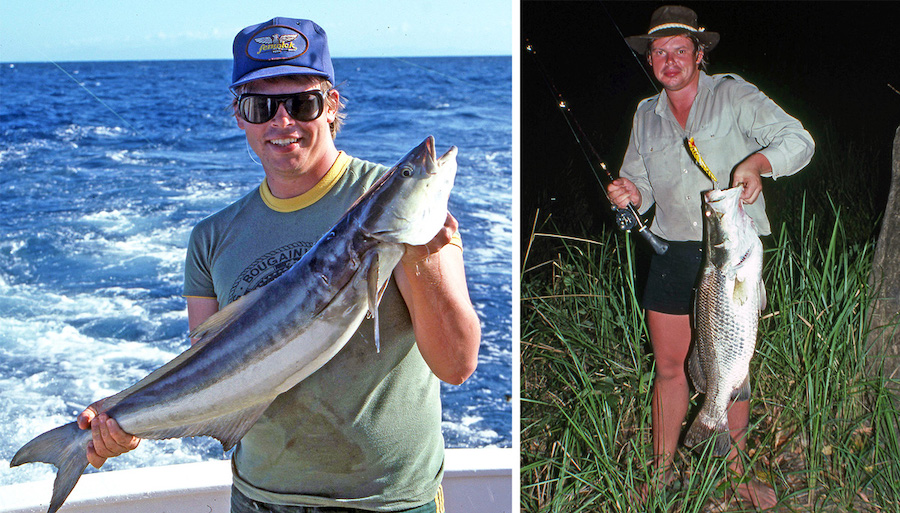
What would I tell my fishing-mad younger self if I could travel back in time and offer him some advice?
While on this subject of looking back in time, I was asked during a recent presentation to nominate the single biggest advance I’ve witnessed in fishing tackle during my 60-odd years of dangling a line. I had little hesitation in giving an answer. For me, the biggest step forward came with the advent of braided fishing lines.
Ironically, this is actually another of those “back to the future” subjects. Way before any of us reading this ever picked up a rod, anglers used woven, twisted or braided lines made from horsehair, plant fibres, silk, linen and other multiple fine strands to catch fish. By the middle of the 20th century, braided cord or “cuttyhunk” lines were very popular, but they were just about to be largely replaced by a brand new material called nylon. What followed was a period of 50 years or more where nylon monofilament lines came to totally dominate the recreational fishing market.
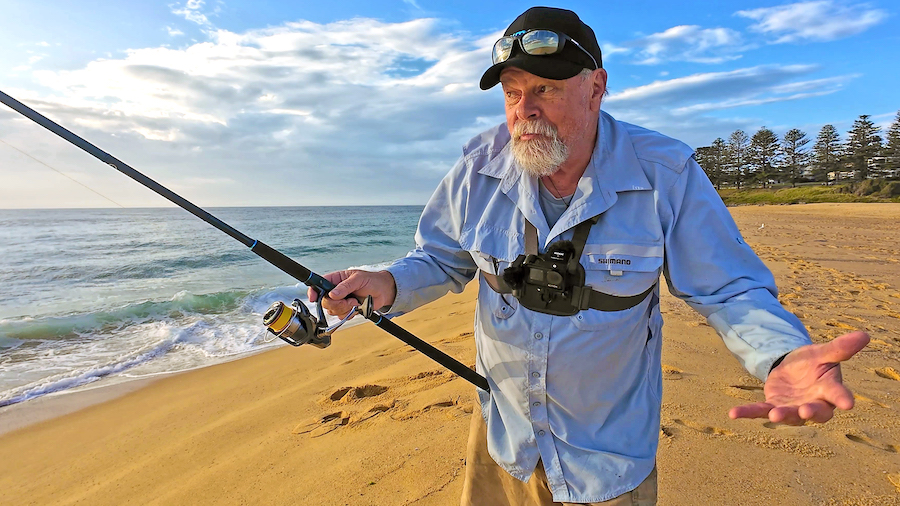
What’s the biggest single advance in fishing tackle in the last 50 years? Starlo knows his answer to that question. Yours may differ.
That’s not to say that other fishing lines didn’t continue to be used through this period. Multistrand dacron (and later micron) remained reasonably popular for certain specialist applications, including heavy tackle game fishing and fly line backing. But well over 90% of recreational anglers spooled their reels up with nylon monofilament. Mono ruled for decade after decade.
Then, in the late 1980s, came a fishing line revolution… I can still remember the first times I used representatives of the new breed of what soon began to be referred to as “super lines”. That was during the very early 1990s. Brands like Fenwick Iron Thread, Cortland Spectron and Berkley UltraMax became popular, but then Spiderwire hit the market and very soon dominated it, at least for a few seasons. Today there are dozens, maybe hundreds, of braided gel-spun polyethylene (GSP) lines on the market.
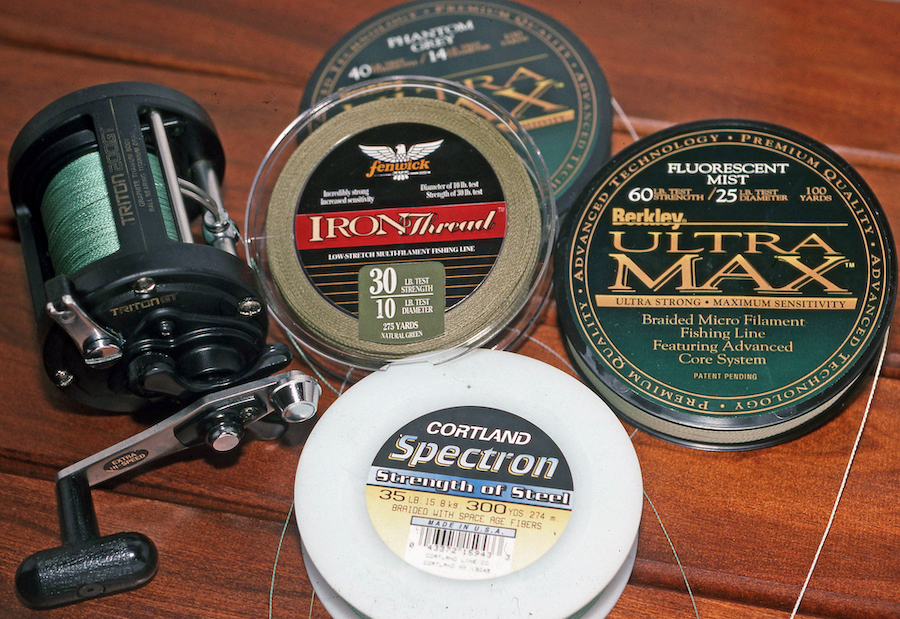
Some of the earliest of the modern braids to hit our shores and tackle shop shelves.
Fishing with braid took some getting used to, and the price difference between this material and mono was eye watering, which put a lot of people off. But I absolutely loved the stuff! Within a few short years I’d switched almost exclusively to running braid on nearly all my reels. Today, I still use it for most applications, although I do have a few outfits spooled up with fluorocarbon, which is a modern monofilament line exhibiting slightly different characteristics (and less stretch) than traditional nylon.
So, why braid? For me, the answer is pretty simple. Braid is much thinner for its strength than any monofilament and it has virtually no stretch. Those two attributes mean I can squeeze more line of a given strength onto a reel, cast further, and suffer much less from wind and water drag on the line. I also have a far better “feel” for exactly what’s going on out at the lure or bait, can set hooks with greater ease (and less effort), and then have the pulling power to dictate terms to a fish and (hopefully) steer it away from snags or rocks, as well as shortening fight times to improve the survivability of released fish. Overall, the differences are dramatic.
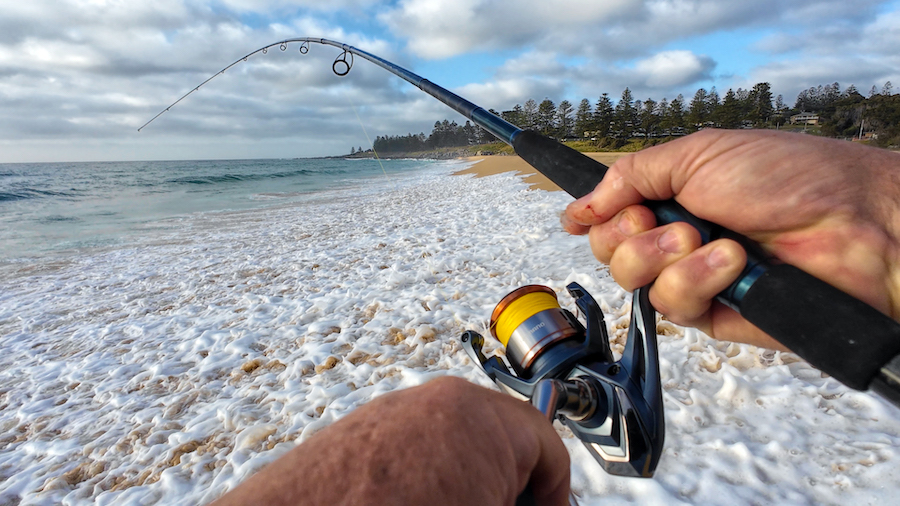
Braided line has transformed Starlo’s fishing and he suspects he’s not alone in that.
Of course, nothing’s perfect, and braid has its negatives, too. It’s still pretty expensive compared to most monos (although I’d argue it also lasts longer). It’s opaque, and therefore potentially more visible to fish than mono. It does require a bit more care (and increased turns or wraps) when tying knots, and it abrades quickly when pulled over hard, rough surfaces under load. Furthermore, the minimal stretch of braid can result in pulled hooks, and the fact that it floats can also be a disadvantage in some applications. For all these reasons (and a couple of others) I always add a leader of mono (either nylon or fluorocarbon) when I’m running braided main lines.
Interestingly, a lot of anglers whose skills and know-how I greatly admire are using fluorocarbon monofilament main lines more and more these days over braid. One such exponent is Steve Morgan, the creator of the ABT Tournament circuits. Morgo’s a big fan of running fluorocarbon “straight through”, especially when throwing treble-equipped hard bodied lures for finesse targets like bream and bass. But Steve still reaches for a braid-and-leader rig when he needs maximum bite detection and hook setting abilities in deeper scenarios, or the brute force stopping power to pull up a rampaging barra short of the trees. Horses for courses.
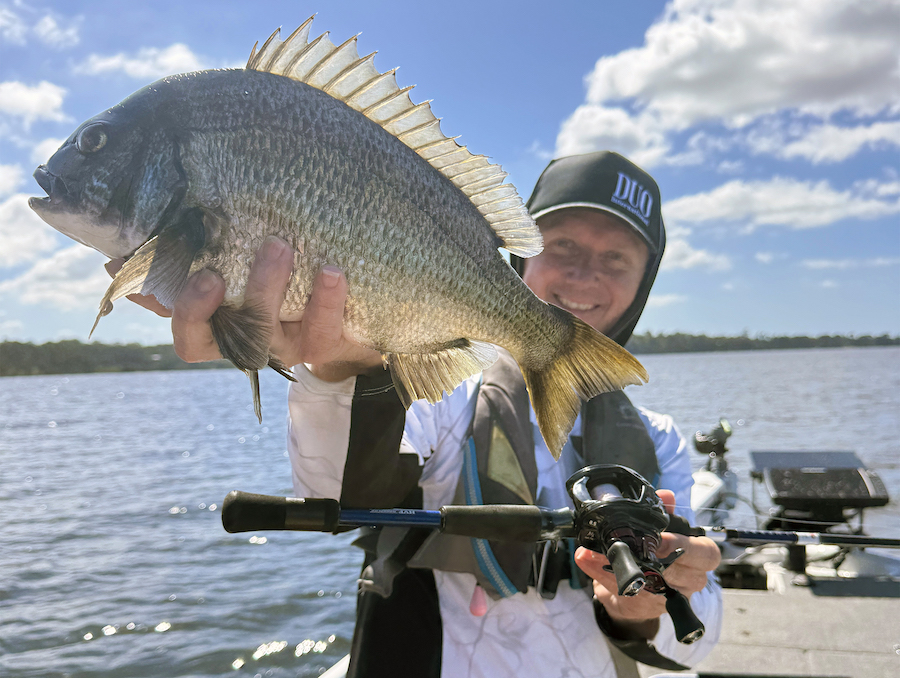
Steve Morgan is one gun angler who’s made a big swing back to mono in the form of fluorocarbon fished “straight through”.
For me, however, the braid-and-leader option remains my “go to” choice most of the time. Personally, it has been a total game changer, especially in areas such as beach fishing. The ability to really feel what’s going on out there and not have my rig constantly dragged around by the breeze and surging surf has transformed beach fishing (which I once loathed!) into one of my favourite pursuits. Likewise deep water bottom bouncing and finessing soft plastics. Being able to instantly detect the slightest tap, react with a positive hookset, then take the fight to the fish with a strong, low-stretch set-up has changed my fishing and greatly enhanced my enjoyment of the entire process
Naturally, I don’t expect everyone to agree with me. We’re all entitled to our opinions and preferences. But for me, braid is the single biggest advance in tackle from the past five decades. What would be your pick? If you manage to get onto the October livestream, let me know in the chat.
Until next time, Tight Lines (be they braid or mono).
![]()

Steve (Starlo) Starling is an Australian sports fishing writer and television personality who has appeared in many of Rex Hunt’s Fishing Adventure programs on the Seven Network.
He has published twenty books on the subject of angling, as well as thousands of magazine articles.
Starlo has scripted and presented many instructional videos and DVDs, and been a Researcher and on-screen presenter for a number of Australian angling and outdoor television programs.
Follow Starlo Gets Reel on Youtube for some of the best, educational and most entertaining fishing viewing on-line.
Click on the banner below for a direct link to the Channel.









